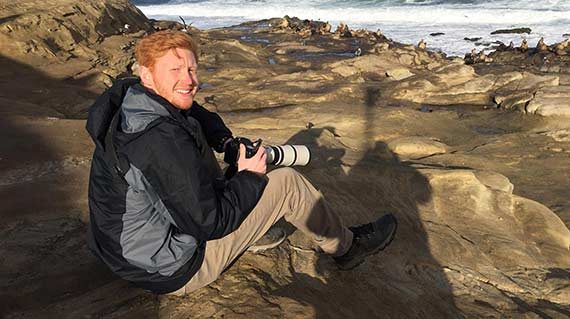
Your Guide: Jacob Roalef
Tours: Alaska, Arizona, California, Colorado, Florida, Maine, Minnesota, Ohio, Texas, Wyoming, Birding Ecotours (Worldwide)
Our exciting adventure to the northern portion of Arizona begins immediately following our tour of the desert and scrublands of the south-eastern portion of the state. The area to the north of Mogollon Rim, an escarpment defining the south-western edge of the Colorado Plateau, presents a completely different notion of Arizona with its expansive ponderosa pine forests, permanently snow-capped peaks, and steep canyons. The best-known of these canyons, the Grand Canyon, is one of the seven natural wonders of the world and is located in the fascinating Grand Canyon National Park. Here, the birds are more typical of the Rocky Mountains, such as Pinyon Jay and Lewis’s Woodpecker.
We begin our tour with some desert and juniper scrub birding in a region just outside of Phoenix for a few special birds such as Black-chinned Sparrow. We then head north out of the desert to the city of Flagstaff, which will be our base for most of the tour. Just north of the city are the majestic San Francisco Peaks, the highest mountains in Arizona at 12,633 feet (3,851 meters). These mountains are home to a long list of iconic Western United States species, such as the amazingly colored Mountain Bluebird, the striking Steller’s Jay and the curious Clark’s Nutcracker. From our base at Flagstaff, we will make trips further north to both the Grand Canyon and Vermilion Cliffs. Besides some of the most stunning views on the planet, these areas are excellent for birding with the true highlight and target being the Critically Endangered California Condor.
This exciting six-day tour can be combined with our Comprehensive Southeast Arizona — The Desert and Sky Islands tour which precedes our northern Arizona tour.
Duration: 6 days
Group Size Limit: 4 – 8
Date: 21 – 26 August 2026
Start: Tucson, AZ
End: Tucson, AZ
Price: US$2,957 per person sharing assuming 4 – 8 participants
Deposit: 25% of full tour price
Single supplement: US$551
We can run the same trip at a price similar to the larger group price for 2 tour participants, if they rent their own vehicle and pay for fuel – please e-mail [email protected] for details.

Tours: Alaska, Arizona, California, Colorado, Florida, Maine, Minnesota, Ohio, Texas, Wyoming, Birding Ecotours (Worldwide)